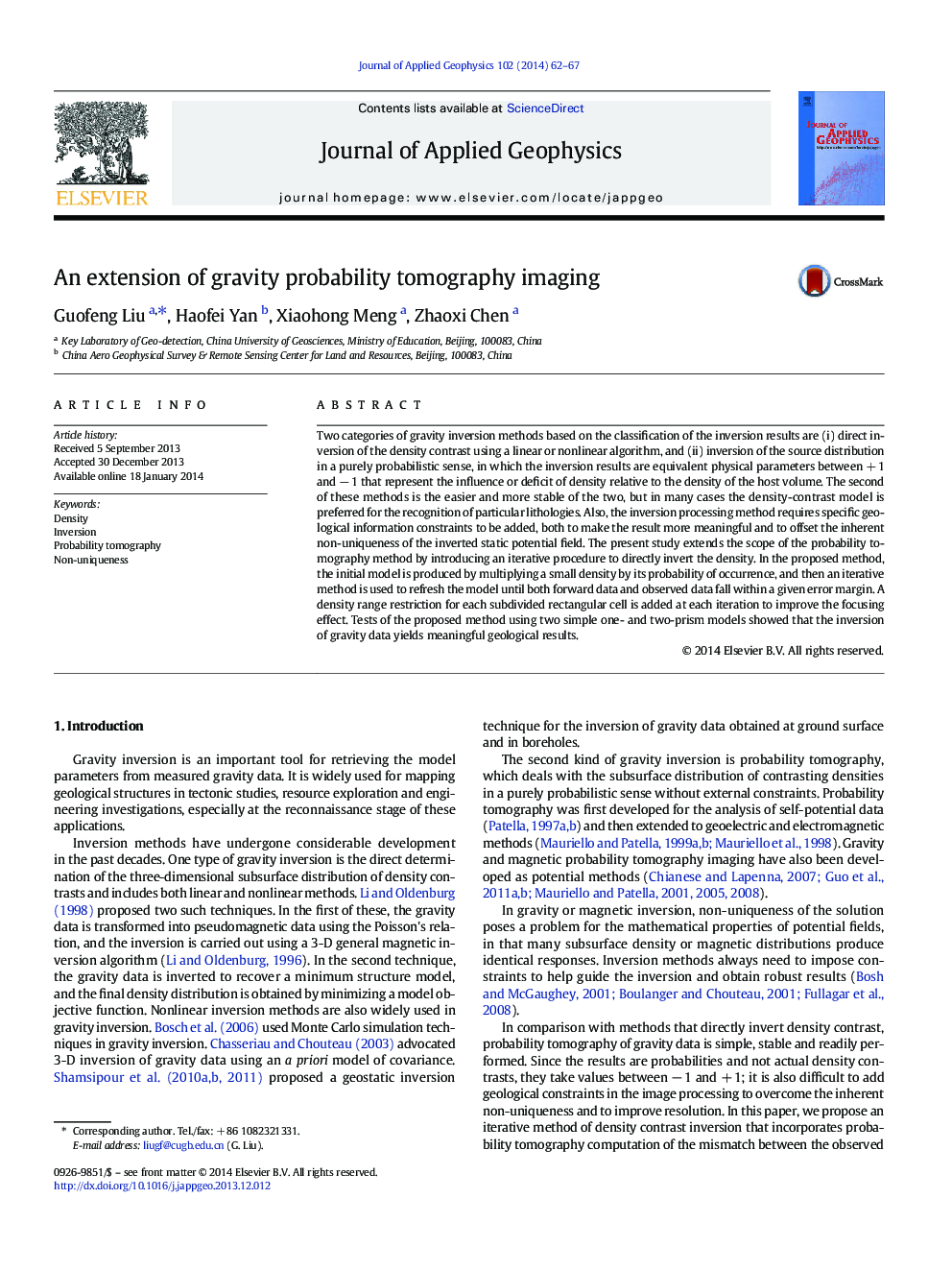| Article ID | Journal | Published Year | Pages | File Type |
|---|---|---|---|---|
| 4740183 | Journal of Applied Geophysics | 2014 | 6 Pages |
•An extension of probability tomography is provided in gravity inversion•The inversion result is density not equivalent density value between − 1 and + 1•Density constriction range can be added to the inversion process•2D and 3D models are used to test the method
Two categories of gravity inversion methods based on the classification of the inversion results are (i) direct inversion of the density contrast using a linear or nonlinear algorithm, and (ii) inversion of the source distribution in a purely probabilistic sense, in which the inversion results are equivalent physical parameters between + 1 and − 1 that represent the influence or deficit of density relative to the density of the host volume. The second of these methods is the easier and more stable of the two, but in many cases the density-contrast model is preferred for the recognition of particular lithologies. Also, the inversion processing method requires specific geological information constraints to be added, both to make the result more meaningful and to offset the inherent non-uniqueness of the inverted static potential field. The present study extends the scope of the probability tomography method by introducing an iterative procedure to directly invert the density. In the proposed method, the initial model is produced by multiplying a small density by its probability of occurrence, and then an iterative method is used to refresh the model until both forward data and observed data fall within a given error margin. A density range restriction for each subdivided rectangular cell is added at each iteration to improve the focusing effect. Tests of the proposed method using two simple one- and two-prism models showed that the inversion of gravity data yields meaningful geological results.
